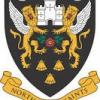Leaderboard
Popular Content
Showing content with the highest reputation on 04/02/15 in all areas
-
Latest of the bench is the Tamiya 1/48 Fairey Swordfish Mk ll. 819 NAS based at RAF Manston in June 1944. I saw a picture of this aircraft in the Swordfish, From the cockpit book and as Manston is just up the road from me I thought it would be rude not to model it. The kit is a dream and the decals are from the xtra decal / MDC sheet. And yes there is a cover from the engine cowling to the oil cooler, a mod used on the Arctic convoys. Hope you like her, please feel free to comment etc. Thanks for looking Dick14 points
-
Well, 2014 was a bit of a bust for me modelling-wise, as I didn't actually finish a single thing. Fortunately 2015 is shaping up to be a bit more productive (actually infinitely more, if you're a stickler for math.) Hot off the bench is the good old Tamiya Spitfire Mk.Vb, pretty much OOB. The only things I did to it were: - Refined the wing trailing edge a bit to fix the well known shape issue - Refined the shape of the nose a bit to make the rocker covers a bit less "broad shouldered" looking - Drilled out the canon barrels - Drilled out the exhausts And that's it. I didn't even add a seat harness, although I still have the option since the canopy hood is only tacked on. Paints are Gunze Mr Colour for the Dark Earth, Tamiya 75% XF81 Dark Green plus 25% XF49 Khaki for the Dark Green and 75% Tamiya XF21 Sky plus about 25% X2 White for the Sky. The roundels and fuselage codes were masked and painted, while the rest of the decals came from the new Airfix Mk.Vb kit (which will be next off the bench, as it happens.) The markings themselves are neither fish nor fowl, BM597 having never actually been painted in this camouflage scheme during her service career, although she did wear the codes JHoC while flying with 317 Sqdn. As a restored warbird, BM597 does indeed wear these colours, but there are several airframe details that are post-war modifications that the Tamiya kit does not include (obviously). So I've painted the model up in the restored colours, but weathered it as if it were in service, just because I felt like it. Questions and constructive criticism are always welcome! Cheers, Tony13 points
-
Gosh.. I do not remember the brand of this kit... anyway was excellent, resin parts, photoetched sheet... everything. Built some years ago. It depicts the personal mount of ace Giuseppe Biron (who also created the scarecrow embem of his group).10 points
-
Hi folks,last week while binning some old boxes and a couple of kits beyond saving I actually had this hovering over the bin with the airframe primed minus all the rest of the pieces.I bought it last year for pennies just for the scheme but lost interest as I hated the canopy.So I thought have a laugh and using the Maskol technique I have done on a couple of kits see what I could do to represent the effects of the Hot African sun if it did,nt work nothing lost just a couple of hours and a pot of paint.So here,s the finished kit which I am glad I saved, the canopy was nowhere as bad as I thought although the kit is apparently full of errors not sure with having the loop antenna it should have the wire as well but either are easily removed if wrong.I am now trying this method on a Korean war Corsair.Thanks for your time.8 points
-
- A very strange bird which always attract attention on exhibition tables. Hobby Boss has done a good job, the kit is easy to assemble without any use of putty. I ve used after markett resin cowling and propeller as well as glazing mask and Eduard interior adhesiv photo-etched .8 points
-
Finished last week for a GB on another site. Wellington Mk.X 'Z' of 311 squadron RAF Coastal Command, June 1943 : Comments and critiques always welcome. Regards Tom8 points
-
Here's another one from me for 2015, a Hobby Boss 1/72 He162 Spatz (sparrow) - NOT a "salamander" apparently, that was just the name of the emergency fighter project... this all-wooden jet fighter was rushed into service and its combat record is unrecorded, although I am working on the theory it inspired the Folland Gnat - examples were flown in the UK after the war. I built this nice kit more or less from the box, apart from some added cannon barrels although I needn't have bothered... and some seatbelts - I just have a piece of masking tape painted dirty brown and stuck to my cutting mat ready to be sliced! The interior on this is rudimentary but the way it's moulded - the fuselage is in one piece - it's impossible to rework it, and it doesn't look bad once painted with the canopy on. I'm not sure about that gunsight, but there it is... parts fit is good but pegs need scraping to fit, particularly the undercarriage. There is supposed to be a join across the top of the engine nacelle so don't do what I did and fill it... once you have the landing gear on one thing becomes obvious, it's a verdammt tail sitter! There is no room in the solid nose for weight so all I could do is stick some scrap white metal in the nose gear bay! Even then it goes nose up when you breathe on it... Paint was from Humbrol's new RLM colour range. The decals were the only place I really deviated here - the nose arrows were orange and may or may not have been right, so I made new ones out of the red block on Xtradecal swastika sheet. The rest of the decals are kit, apart from the swastikas on the fins - the kit painting guide has you paint the fins the camo colour, all the Spatz references I had showed these in the underside colour with black swastikas, so I painted accordingly and used the smallest black swazzies off the Xtradecal sheet (Most Useful Aftermarket Decal Sheet Ever). Even so I'm not sure about the badge and the 4 with it's nice black outline... the kit tail numbers were in white and I didn't have anything suitable in black so I left them off until I can get hold of better ones. The red bit around the front of the nacelle is not on the colour guide but it looks cool. Mask the canopy again, spray of Xtracrylic matt and there it is... the Whiffer that Was. I hear someone is building a flying replica...8 points
-
Thanks Perdu. After the club meeting tonight, one thing I did want to tackle was the brake lines on the main undercarriage legs. I am never happy with 2D PE trying to represent 3D features like hydraulic hoses: My solution was to search out some 0.4mm black enamelled wire which scales out at 28.8mm which sounds about right to me: I should have used this on the wing tip hydraulic lines as the 0.2mm diameter I used is a little under scale, ah well, live and learn. I soldered on the line like so: A little while later both hoses were sorted, bracket bent to shape and generally cleaned up: Before I could install them though I needed to drill out the lightening holes in the scissor jacks, 0.5mm as it turns out: Glued in place this is how it looks, I think I will let this harden up overnight: For reference, here is the reality: Well that is the results of my efforts tonight so its bye from me, Nigel Plenty to follow tomorrow to be sure.8 points
-
Finished at the same time as my Matchbox Welly as: Wellington Mk.Ic, W5674 / DF-O of No.221 Sqn, RAF Coastal Command, RAF Limavady 1941 I know that this particular aircraft should be carrying a set of 'stickleback' ASV antenna but unless someone has a set of the Paragon ones stashed away they'd like to sell me she'll have to stay as is for the time being. Comments and critiques welcomed as always. Regards Tom7 points
-
It was not easy to find on th market a CA Blenheim MkIV, and when I found it, it was not cheap to acquire. Not an easy model to build, had to work a lot on it, especially on the all-clear nose. I just finished it and this was not the best moment for me to build stuff (I have good periods and bad periods for modelling, does this happen to you too, friends?) The final result was far from perfect and I had to add more weathering than usual to conceal flaws (flaws in my job, not in the kit that was very good even if definitely not for beginners). I used custom made decals depicting a speculative Blenheim. I did not find any info on the C-XD, so I just imagined it was like this. One thing that may seem odd is the mounting of a late type chin turret with a late type, Vickers equipped, top turret. Anyway a Blenheim Mk IV could not miss in my collection!7 points
-
Oh. My. God. That was scary! I tried it with the hottest water I could coax out of the tap at first; I couldn't hold my hand in it for more than a few seconds, but it had no effect. So I boiled a kettle, let it cool for 30 seconds or so to take it down a tad from boiling, and poured it into the basin. It worked! But not before the port tail went visibly floppy on me and I had visions of the entire thing turning into the very wobbly jelly that I feared in the first place. The only thing that kept me from panic was the guy in the video, who said that resin "wants to return to its original shape". I reckoned that Ali would have produced something that was right, and any warpage would only have occurred afterwards. Anyway... you want to see it, don't you? Starboard boom: Port boom: 3. Whole aircraft from as near dead centre ahead as I can manage with an iPhone and still shaking hands! Port boom and tail dry fitted only. Lesson learned; it can be done, but it's not for the faint hearted! Another notch in the returning modeller's task book is complete. Now I need a stiff drink!7 points
-
Here are the finished-off brake lines: They can now join the queue for primer. Next I started on the various roof antennas. Eduard provide these nice base details (85), my concern though was with structural integrity so I drilled out the base with a 0.4mm drill: Note also the pesky injector pin mark. I also pierced and then drilled the bases with a 0.8mm drill as well as filling the marks: Here they are cleaned up with some rod glued in: The blade one was tricky as it was not much wider then 0.4mm. On the roof I marked out the antenna positions and then scraped off the faint raised ovals that marked their position: Once glued in place I drilled out the fuselage plastic with a 0.5mm drill and did a fit check: The antennas are different colours from the fuselage and will have to be painted separately, more parts ready for primer. Next was this side door surround which I pre-bent by gently rubbing with my burnishing tool: That was soon installed: That really should have gone on earlier but I just missed it. Now I have to have a look at what to do next.7 points
-
6 points
-
Starboard tail boom now fixed - just needs a smear of putty and a little fairing in, but essentially it is done. The flap is just held in place with blu tac to test fit; it won't actually be glued in place for ages yet. I have also glued the starboard main U/C door in place. Since the photos I have polished out the ejector pin marks inside the flap housing in the wing. Bit of tidying up to do once everything has dried, and then for the other side. We're away for the weekend, so this might be it until next week. Crisp6 points
-
And on we go A little bit, but they all count Made the LRMTS head unit for the GR3 model When I opened the moulded window on the Hasegawa kit there was a big hole where the Airfix one had solid plastic so I needed to make up a solid base to add the seeker unit I cut a slice across a 1mm(3/32"?) square piece of Evergreen rod and spliced the two faces so they would make a small oblong block to work on. Although I like the first unit I built as usual (and inevitably) I wondered if I could develop it further, using that nice picture Steve linked to showing the unit in its prime A small lens at the top and a round structure in the middle, presumably the laser unit at the top and maybe a seeker/reciever unit in the middle Anyway whatever, I added a small piece of round rod low centre(Low centre? eek! But you know what I mean) ready to slot into the hole 'behind the window' Yes OK low centre stopped making sense so I moved it a bit so it was near enough central and fitted it in t'ole and added a dab of darkness What I intend to do is add a small dollop of PVA above the seeker head (assumed) and then top the lot with one of my Little Cars 2mm lenses with the shiny backside removed You can see I have been performing minor surgery with the Hasegawa moulded on wing fences removed and the upper wing missile rails that the Italeri T2 will not be using added As the Hasegawa kit is the GR3 candidate a few other minor alterations have been included, I see from the pictures of Jaguars being stripped that the later chute housing has a duct mounted beneath it to house the chute mechanism and the tail cone is a truncated cone My attempt at these mods has begun though there will be some extra filling in hand for tomorrow The white stripe across the belly of the bird is where the fill panel fails to keep its level at the front of the engine area Perfect Plastic Putty comes to the rescue The tailcone's flattened area awaits filing and polishing tomorrow, the extra underside piece can just be seen below it I will be detailing the rear of the T2 cockpit and making some kind of structure to hold the canopy lifting pistons next Then moulding the GR3's screen to allow the retaining of the Skyguardian doodah when it is fitted Ciao6 points
-
5 points
-
I just did this as a quick build with no detailing, purely for fun. And it was an awful lot of fun. Yes, I know I should have filled the panel hinges for the photo flash flares and maybe should have dirtied the exhaust area but for now I'm happy with her. The decals, from the kit, are for a Norm 90 Spook but I just wanted to practise painting a Norm 81B scheme. Airbrushed in Tamiya acrylics. [/url5 points
-
Hiya Folks, This is my first finished model in 2015 and is one which I`ve wanted to build for a long time. My Canadian friend Jim Bates sent me a set of IPMS Canada decals featuring a Dakota from 437 `Husky' Sqn RCAF as a surprise Christmas present and so I set to work straight away using the new Airfix C-47 kit,...hope you like it! It seems that many of the later RAF Dak`s had a darker version of Olive Drab applied with the lighter style of Neutral Grey underneath and so did this one so I tried to replicate this as best as I could with my trusty hairy sticks, using an old bottle of Aeromaster Neutral Grey for the undersides and mixing Olive Drab with Dark Green for the uppers. The resulting colour looks different when the light changes, just like the real thing so hopefully I`ve got it right? The Airfix kit did not have the correct style of engine air intakes so a pair were raided from the Esci kit! Cheers fo the decals Jim and I hope that I`ve done them justice, All the best Tony PS- For anybody who is interested here is my first build of the new Airfix Dakota in SEAC markings; http://www.britmodeller.com/forums/index.php?/topic/234963296-new-airfix-172nd-scale-douglas-dakota-raf-seac/?hl=dakota And if you want to compare it to the old Esci Dakota, here is one which I built last year wearing Royal Navy markings; http://www.britmodeller.com/forums/index.php?/topic/234962889-royal-navy-dakota-781x-nas-germany-194546-admirals-barge/?hl=dakota5 points
-
5 points
-
A couple of days and more progress on the interior, but as I progress I am gutted that all this work will be unseen! Anyway, as I mentioned earlier, if you are making this kit with the wingtip floats extended, then you really should consider the Eduard detail set. Without it, the area looks rather different: As opposed to: Now onto the interior. The interior green was Gunze Sangyo H58, Interior Green. I think I said it was H78 earlier, which is an Olive Drab colour, but it is definitely H58 I used. As always, I use the manufacturers own thinners as this never gives me any cause for doubt or concern when thinning the paint. The interior was sprayed carefully, not allowing any paint to build up and pool, so lots of thin, mist coats, rather than one splurge! Eventually the colour built up and it ended up looking like this: There are still a lot of 'boxes' to add to the sidewalls and these were carefully painted and dry brushed, but I stopped there as I knew none of this would be seen again! Sadly, though, there are still loads more 'black boxes' to add despite them disappearing from view when the fuselage halves are put together. The Navigator's table was given a bit of special attention: And the bunks were dirtied up a bit and placed in situ. I'm still not sure what colour the central walkways were painted. Some references show them as interior green as well, other suggest black. Thanks again for all the great comments, both here and via private message, it is really appreciated.5 points
-
Here's a Regia Aeronautica, late '30es, CR-32bis. Excellent and very hard to find Classic Airframes 1/48 kit. Custom made decals.4 points
-
I resolved to reduce my stash, so. Airfix 1/72 Lightning. An issue with the exhausts which need trimming to avoid a gap at the rear end. Decided to mask the green rather than the alclad, but some paint came off with the tape, fixed with a brush, not obvious if you dont look too close. Airfix 1/48 Lightning This was on the shelf for ages because I wasn't happy with the alclad, and the wheels seemed to have a mind of their own, but decided to finish it off. I used replacement wheel bays(lovely detail) cockpit and gun baffles. The one at the back is alclad, the front one is foiled. Airfix 1/48 Mosquito. The kit was quite basic so I didn't try anything fancy, just put it together (after using wrong engines). Me P1099 Fairly basic kit but it went together quite easily. This was more a trial of my airbrush to feather two colour together, was going to airbrush the camouflage as well, but it is beyond my skills so used a brush. It looks OK from a distance. BB4 points
-
Once upon a time I joined the Sabre GB, and somewhat to my embarrassment, I never completed the two kits I had chosen. To be honest, 2014, like for many others, was a crap year and one that I was glad to see the back of. Nevertheless, I knew at the time I shouldn't have joined in, but thought it would help me get through the rest of the year, oops, wrong!! Anyhow, they are finally finished,( and I use the term loosely, I didn't really finish the cockpits propely), and here they are, 2 months later: Firstly, the Academy F-86, meant to be in Colombian markings, but now in Italian colours. Sabre M-4 of 4a Aerobrioata, Aeronautica Militere Hliiana from the Microscale sheet 72-425: The Academy kit is a very nice kit, good fit, nice bit of detail and certainly looks like a F-86. The decals were flawless and went on a treat with a bit of help from a drop of Klear. And now the Airfix F-86, first of, I'll say, check your references, the whole lot and not just one paragraph. Meant as a oob build, I had bought a Modeldecal sheet (n37)with some Magister markings, but they also had markings for a Sabre F1, which I liked better than the kit options. On the sheet it had stated that F1's and F4's were the same other than internal fit, that's fine, suited me. I didn't read on, until much later, where it stated that some were fitted with slatted wings, and some were not, and guess which this had. Unfortunately I had already applied the fuselage stripes and couldn't bear taking them off, so I'l just go with a Sabre before fit of slatted wings : The Airfix kit is a nice enough to build, fits well, looks like a Sabre,(although I believe there a some issues?). The Modeldecal sheet is near on 40 years old(1977), but went on easy enough, although some smaller ones are slightly out of register, but nothing major to worry my head over. As usual brush painted and Humbrol used through out the making of these kits, By the way, does anyone know if the Airfix Sabre is too small, or the Academy too big, there's a fair difference between them. Thanks for your interest, Regards, Sean4 points
-
Only one photo today but it represents quite a bit of work. I finished the bits of weathering and painting I wanted to do and then attached all the wheels: They all need more weathering but I will now wait until I'm weathering the whole tank after the main construction is complete. I'm not going to attach the tracks for a while but I did check they fitted okay. Comments and suggestions welcome. Kind regards, Stix4 points
-
Here are some photos of my latest build, the Revell F-84E Thunderjet built OOB apart from etched seat harness. The build was straight forward, the fit of parts being excellent. What this kit is however is a good basis for practicing your decaling skills. Literally all the colour on the kit is all decal, and it took me the best part of three evenings to apply them, along with a helping of some patience as they are not the best decals in the world! It took a lot of decal sol to get them to settle down, and they are fairly brittle and need to be handled carefully. Anyway, I am pleased with the results, and I am sure that I learned more about decaling from this kit than I have from any other. All comments welcomed.4 points
-
The first two Aleutian Defenders are complete: I just weathered them a little more with pastel chalks, inspired by tips given in Procopius' Lancaster thread. And I added the aerials using Uschi very fine rigging. More will be up in the STGB gallery. Thanks again to everyone who has weighed in with encouragement and suggestions. On to the P-40K's.4 points
-
Hi all,just did a little work on the base today with the base colours then some coarse grass added.Thanks for looking in.4 points
-
The hardest part so far has been the carb intakes. The kit ones are B-25J and are smaller than the TB-25 , so i have had to modify / scratchbuild new ones. I didnt want to damage the surrounding areas so i removed the whole intake from the wing. This made it easier to work on too. I built the height up with plasitcard , made a rectangular intake and blended it all in. There is also some kind of outlet on the rear of the intake that i had to cut out. They are not perfect but good enough for me. I have stared at too many close ups of carb intakes in the last few days. Heres the basic new shape Heres the other one fixed to the wing Im sure they will need tweaking a bit more later on. All taped together to see how it looks.4 points
-
Hi, This is my latest build model. This is the very good kit of hasegawa, I've just added a resin cockpit of cmk. Painted whith Gunze and Tamiya. See you for the next Joel4 points
-
4 points
-
Sprayed over the sanded bits with more neutral gray. Looks much nicer thanks to the sanding, IMO, but I would say that, wouldn't I? Will future the belly tomorrow, then paint the upper surface when I can.4 points
-
Paint and decals now on. The Adu Dhabi Hunter is painted Tamiya XF-52 Flat Earth and a mix of XF-3 Flat Yellow and XF-60 Dark Yellow for the Light Stone. Fortunately I mixed more than I needed and was able to store it for any touch ups later in the build. The Singapore Hunter has XF-2 again, XF-61 Dark Green and then a mix of Xtracrylix XA1815 Bronze Green and XA1116 FS14102 for the lighter green. Looking at how it has come out I don't think there is enough contrast between the greens and think I should have added more of the XA1116. Decals went on fine except for one of the Abu Dhabi "Army Air Force" signs a portion of which broke off and disappeared. Fortunately it was a part of the arabic portion and I have been able to do a passable freehand imitation to fill in the missing part (more pics later). Both nearly finished now and should have more pictures by the end of the week.4 points
-
Today the masking fluid arrived, so I matt varnished the model... ...and once that was dry, I applied some of the masking fluid where I wanted the more extensive chipping: ... then I sprayed overall with hairspray: ... and once that was dry, with Tamiya Rubber Black - if I was only going to use one colour on this kit, that would be it, it looks great: Then I set about scrubbing off some of the paint, and of course I went too far... The sad thing is, I actually kind of liked the way it looked, but while the RDM2A paint did have adhesion problems, it wasn't just loosely sprinkled on the wings to be blown away by the faintest breeze... so I toned it down a bit with a few washes of black: And I think that's more or less it. I had an amusing twenty minutes or so re-spraying the port wing when, in an effort to speed the drying of the wash I picked up the airbrush to give the wing a blast of air, only to blast out a spurt of cellulose thinners that had been lurking in the interior of the airbrush for just such an occasion. How we laughed! So, next I think will be a coat of Klear, then decal-wards... Cheers, Stew4 points
-
- this is the VIGGEN two seater. The kit is this time the Airfix one , with Neomega main trans kit and Two Mikes and Maestro diverses adding. As promise it is in THE Viggen only acceptable dress. - About this dress not withstanding the "usual" masking job, I'm not happy with the shade definitively too dark....I ve used old Humbrol authentical paint from previous secular vintage. If the quality of the paint is still very satifiyng but their shades are too dark,,this effect being accentuated by varnish, for the next one ,it will be an SH 37, I'll try something else...3 points
-
After that I think I'd better have one or two too Good catch though, well done for having (and holding) the nerve to do it b3 points
-
The water doesn't need to be boiling, I've found that hot water from a tap is usually sufficient, but if its a relatively thick part it needs to soak to allow the part to get to a pretty even temperature throughout. I used to have a Magna Models 1/72 Supermarine Attacker, after a period of time the wing tips would droop, a quick dip in a sink full of hot water and I'd be able to straighten them out, once realigned you could dip them in cold water to set them to the new shape. The secret is not to force it, the hot water should make it pliable but still fairly rigid, if you force it it may still snap as resin can be quite brittle.3 points
-
As there was a lot of interest in the first post http://www.britmodeller.com/forums/index.php?/topic/234975673-the-first-jets-from-my-collection-of-early-jet-ac/ here are some more First Jets_2 by johnrieley, on Flickr MacDonnell Phantom (the first one!)(MPM) Junkers 287(Huma) Aleksyev I-211(Amodel) Gloster Meteor F1(Dragon) Hawker P1040(Scratch ex Sea Hawk) Lavochkin La 150(Prop & Jet) Yak 15 (Revell) Yak 19 (A&V model) Sukhoi Su 9(K) (Prop & Jet) Most have featured individually in 'Ready for Inspection' John3 points
-
Good progress Bill, taking on three eh !.....I always preferred the look of the twin tub version and recall seeing a superb display at Mildenhall involving a pair of French E's, not much noise but plenty of style and elegance, (oddly the complete polar opposite of the Memsahib).... Not sure if these are of any help old fruit but I took a couple of the Newark's T.2A recently, Melch3 points
-
Nice P-40s. The Hasegawa canopy on the Academy kit really does improve it out of this world. Something for me to try when I use my Falcon canopies on my Hasegawa kits. Steve.3 points
-
Here's my Tamiya Spitfire. First kit built since the (very) early eighties!3 points
-
Thanks for the comments guys, You'll be pleased to know I got further with this build tonight. Firstly I masked the model with artists masking fluid and mixed up some Black with a dash of Blue and I sprayed the whole model. I then lightened it with some blue grey and did the centre of the panels. Once I removed the masking fluid I thought the contrast was a bit stark so I blended it in with some more of my mixed colour which tones it down a bit. I'm really pleased with how this has turned out but think I got carried away with the masking fluid and have too many paint chips and some of them are a bit too big. When I apply a different shade of black (Maybe with red mixed in to represent the RDM2) some of these chips wont get remasked and the effect will be toned down. I also decided to drill out the exhausts this evening. Not perfect but is a vast improvement Not pictured yet. The propellor tips were also sprayed yellow. Airfix 1:72 Boulton Paul Defiant by Marks CVS, on Flickr Airfix 1:72 Boulton Paul Defiant by Marks CVS, on Flickr Airfix 1:72 Boulton Paul Defiant by Marks CVS, on Flickr My Spit makes another rouge apprentice to demonstrate how well yellow looks when applied over a pink base colour. Airfix 1:72 Spitfire by Marks CVS, on Flickr More updates to follow soon all being well. I must say I'm getting into this black night fighter theme. I'm contemplating doing both Blenheims I have in all black schemes. An Owl conversion set came for my 109E so I can do one fitted with PeilG IV and I think my next hannants order may contain a Mosquito and an A-20 Turbinlite........ Mark3 points
-
**Update** Main Fuselage Part two. Moving on, the rear end details that the instructions say to remove were cut off using my newly acquired micro saw. Then the new parts were assembled and attached. There's some minor blending in to do. As mentioned before, the cockpit to main fuselage alignment is important and i have this (common to these academy F-15 kits) step to sort out while dry fitting. I carefully applied a small amount of glue to the top on one side. Then where the intake covers over, a small dot of CA glue and kicker was applied to hold in place and provide some strength. The the rest of that side was glued and left to set for over an hour or so. This was the repeated on the other side and I used a cocktail stick wedged in the bottom to keep it lined up. I have a very shallow step that will need some styrene filler and sanding. Engine exhausts Part One. So while the above was drying, i moved onto the two engine exhausts. All parts were cleaned up. Then they parts were primed with Tamiya's nato black, XF-69. Then selected parts were painted Tamiya's Dark Iron, XF-84 which gave a nice contrast and texture. Then a dry brush of mr metal colour Iron. Now a dry assembly of the exhaust. The instructions say that the inside of the exhaust you can see should be white. I like the nato black as it gives a smokey burnt look.3 points
-
Long over due an update here! Construction is all but done All the fiddly bits have been added, resin and PE, the cockpit was a bit of a pig to get installed in the end, I think I must have done something wrong as the rear part had a gap to the spine and the front deck, infront of the IP only just clears the front canopy! Last thing to before I paint is to mask the canopy! Does anyone know if the centreline pylon was removable? Guess who forgot to drill the holes out.... Thanks for looking Phil3 points
-
As well as an injected 1/48th Il-28 "Beagle". V.P.3 points
-
**Update** Main Fuselage Part One. So moving on, I made a start on carefully putting the main fuselage halves together. Dry fitting showed lots of fit and alignment issues. So i approached the task by starting at the front and getting one side lined up apply the Tamiya Extra Thin (TET) and clamping and then leaving for it to go hard. This was repeated on the other side and the plenty of TET as moved towards the back of the fuselage gluing on section at a time. Once that task was completed, I did some preliminary seam sanding and then applied some dissolved styrene to fill the gaps. Then the sanding and filling was repeated until i was happy with a seemingly seam free fuselage. Another task on the main fuselage was to fit the section where the canopy and cockpit attach too. As the cockpit/nose section alignment was most important, this left steps on the top of the fuselage at the joins, these had to be sanded back to remove the step. re-scribing will be done later.3 points
-
**Update** Cockpit part Five. In order to fix the cockpit colour, i had to carefully remove the photo etch that was already in place. This was then re glued back after the painting. The cockpit and nose section have been carefully airbrushed with XF-69, Nato black. Any overspray was cleaned up with a wet cotton bud. This was then drybrushed with XF-22 to give some contrast. Then a final drybrush of Mr Metal colour Iron. Then the cockpit tub was teased into place in the nose section to test the fit which was OK.3 points
-
2 points
-
Nice Sabres there. Referring to your RAF XB900 model, the 'Hard Edge' (or 6-3) wing came along after the slatted wing, some a/c being re winged and others being built as such. But as you say, not all by any means received the mod. It appears possible from my own references that XB900 unfortunately had slats to the end but you never know, maybe it did get re winged. What does it matter anyway, the models look great. Nige2 points
-
Thanks very much gents Afterward I felt I had gone too far in correcting where I had previously gone too far, so scrubbed a bit off, and I have a feeling I went too far again... however I shall press on until I go too far in some other direction or until I am happy with it, whichever comes first. In the process I have broken off all the bits that can be broken off... again. The pitot, the underside aerial and even the tailwheel... (et tu, tailwheel?) but none have gone into the carpet monster's gaping maw. Cheers, Stew2 points
-
Pics of progress from last night: Some canopy framing going on.... ... and again here.... A view of upperwing markings. For those that may not know, the reason the mid wing and close to fuselage stripes were not applied was due to the change of ID markings and so the black in these areas and the interrupted stripe on the fuselage were removed or overpainted with yellow. For me that made things easier to do. A bit more later.2 points
This leaderboard is set to London/GMT+01:00

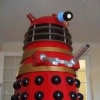
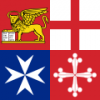





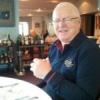
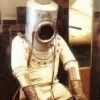
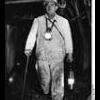

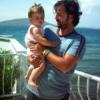
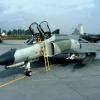

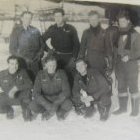
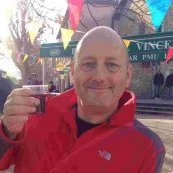

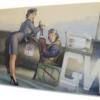
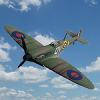
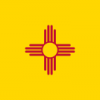
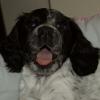



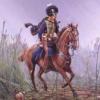


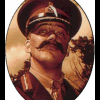
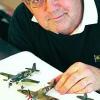
.thumb.jpg.7a01d8b1929350b9124abee30c008ca9.jpg)


